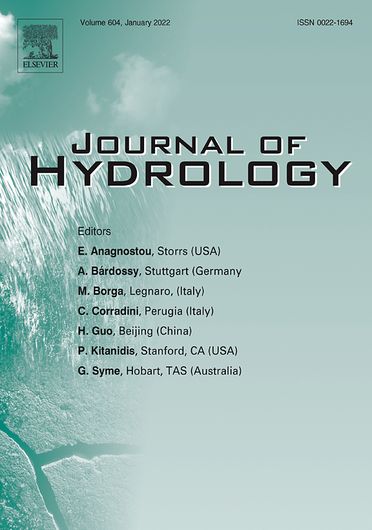Evaluation of GRACE derived groundwater storage changes in different agro-ecological zones of the Indus Basin
Abstract
The Gravity Recovery and Climate Experiment (GRACE) has recently been identified as a useful tool for monitoring changes in groundwater storage (GWS), especially in areas with sparse groundwater monitoring networks. However, GRACE’s performance has not been evaluated in the highly heterogeneous Indus Basin (IB) to date. The objective of this study was thus (i) to evaluate GRACE’s performance in two distinctively different agroecological zones of the IB, and (ii) to quantify the trend of groundwater abstraction over 15 years (i.e., from 2002 to 2017). To capture this heterogeneity at the IB, the two different agro-ecological zones were selected: i) the Kabul River Basin (KRB), Afghanistan, and ii) the Lower Bari Doab Canal (LBDC) command area in Pakistan. The groundwater storage anomalies (GWSA) for both regions were extracted from random pixels. The results show a correlation (R2 ) of 0.46 for LBDC and 0.32 for the KRB, between the GWSA and in-situ measurements. The results further reveal a mean annual depletion in GWSA of - 304.2 ± 749 and - 301 ± 527 mm at the LBDC and the KRB, respectively. Overall, a net GWS depletion during 2002–2017 at the LBDC and KRB was 4.87 and 4.82 m, respectively. The GWSA’s response to precipitation analyzed through cross-correlation shows a lag of 4 and 3 months at the KRB and the LBDC, respectively. The GWSA’s poor correlation with the in-situ measurements particularly in the mountainous region of the KRB is driven by the 4 months lag time unlike in the LBDC (i.e. 3 months); besides, the observations wells are sparse and limited. The complex geomorphology and slope of the landscape also cause discrepancies in the correlation of the in-situ measurements and the GRACE-derived changes in GWS at the two different agroecological zones of the IB. The spatially averaged GWSA in monthly time steps is another reason for the lower correlation between GRACE-based GWSA estimates and point-based in-situ measurements. Therefore, care must be taken while using GRACE’s output in regions with heterogeneous geomorphologic features.

